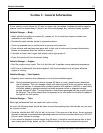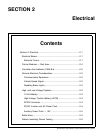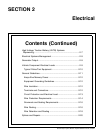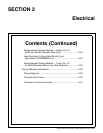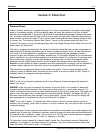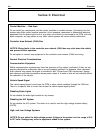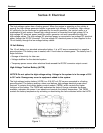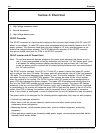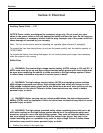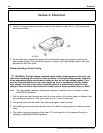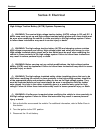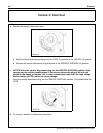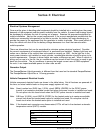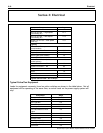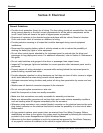
2-4 Electrical
Section 2: Electrical
1. High-voltage connector shield
2. Service disconnect
3. High-voltage battery case
DC/DC Converter
The DC/DC converter is a liquid-cooled component that converts high-voltage (216-397 volts) DC
power to low-voltage (12 volts) DC power while maintaining electrical isolation between the 2 DC
power systems. The converter steps down the high voltage to 12 volts, providing power to the
vehicle low-voltage battery systems. The PCM controls the operation of the DC/DC converter
through an enable input from the PCM to the DC/DC converter.
DC/AC Inverter and AC Power Point
Note: Do not keep electrical devices plugged in the power point whenever the device is not in
use. It is not recommended to use any extension cord with the 110 VAC power point, since
it will defeat the safety protection design provided by the cap and twist tab. It will also
cause the power point to overload due to powering multiple devices that can reach beyond
the 150 watt load limit.
The DC/AC inverter converts 12-volt DC to 110-volt AC to power a device that uses AC current
with a rating of less than 150 watts. The power point will automatically shut off if the load exceeds
150 watts. This prevents damage to the inverter or load. The inverter supplies 110-volt AC power
only when the key is in the ON/START position. This reduces the draw on the 12-volt system
when the vehicle is not running. The DC/AC inverter outlet (AC power point) is equipped with a
green LED that indicates the system integrity. The green LED illuminates continuously when the
key is in the ON/START position and the system is operating normally. The green LED flashes
constantly if the key is in the ON/START position and a fault is detected. Short circuits, overloads
or overheating of the inverter will cause the green LED to flash and the power to be cut off to the
outlet. If the LED is flashing, the problem must be corrected (that is, short circuit or excessive
load). If the inverter is overheated, it must be allowed time to cool off (without the load connected).
The power outlet is not designed for the following electric appliances; they may not work properly:
• Cathode ray tube-type televisions
• Motor loads, such as vacuum cleaners, electric saws and other electric power tools,
compressor-driven refrigerators
• Measuring devices, which process precise data, such as medical equipment, measuring
equipment
• Other appliances requiring an extremely stable power supply: microcomputer-controlled electric
blankets, touch sensor lamps
2010 Escape Hybrid, Mariner Hybrid Modifiers Guide, 07/2009




